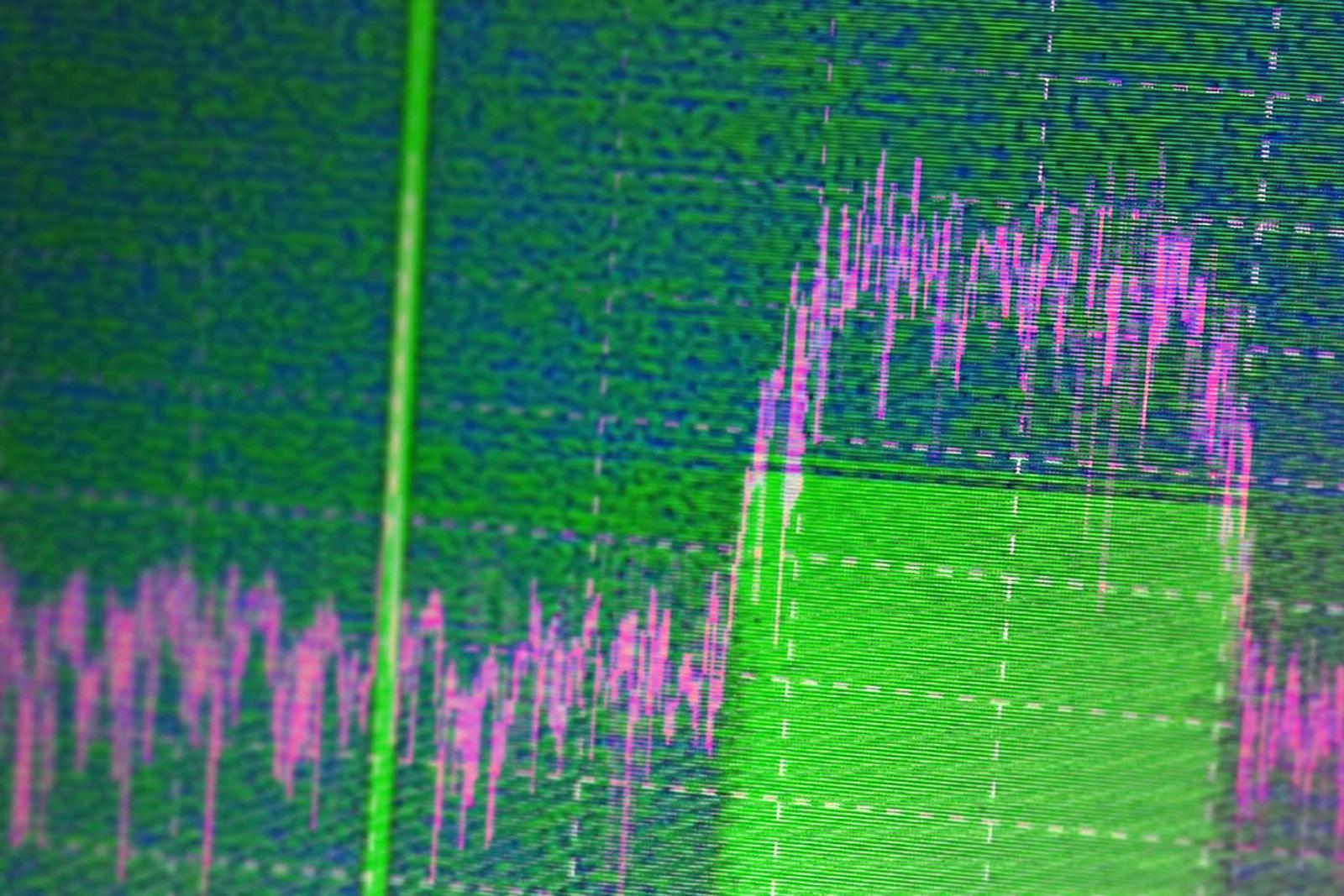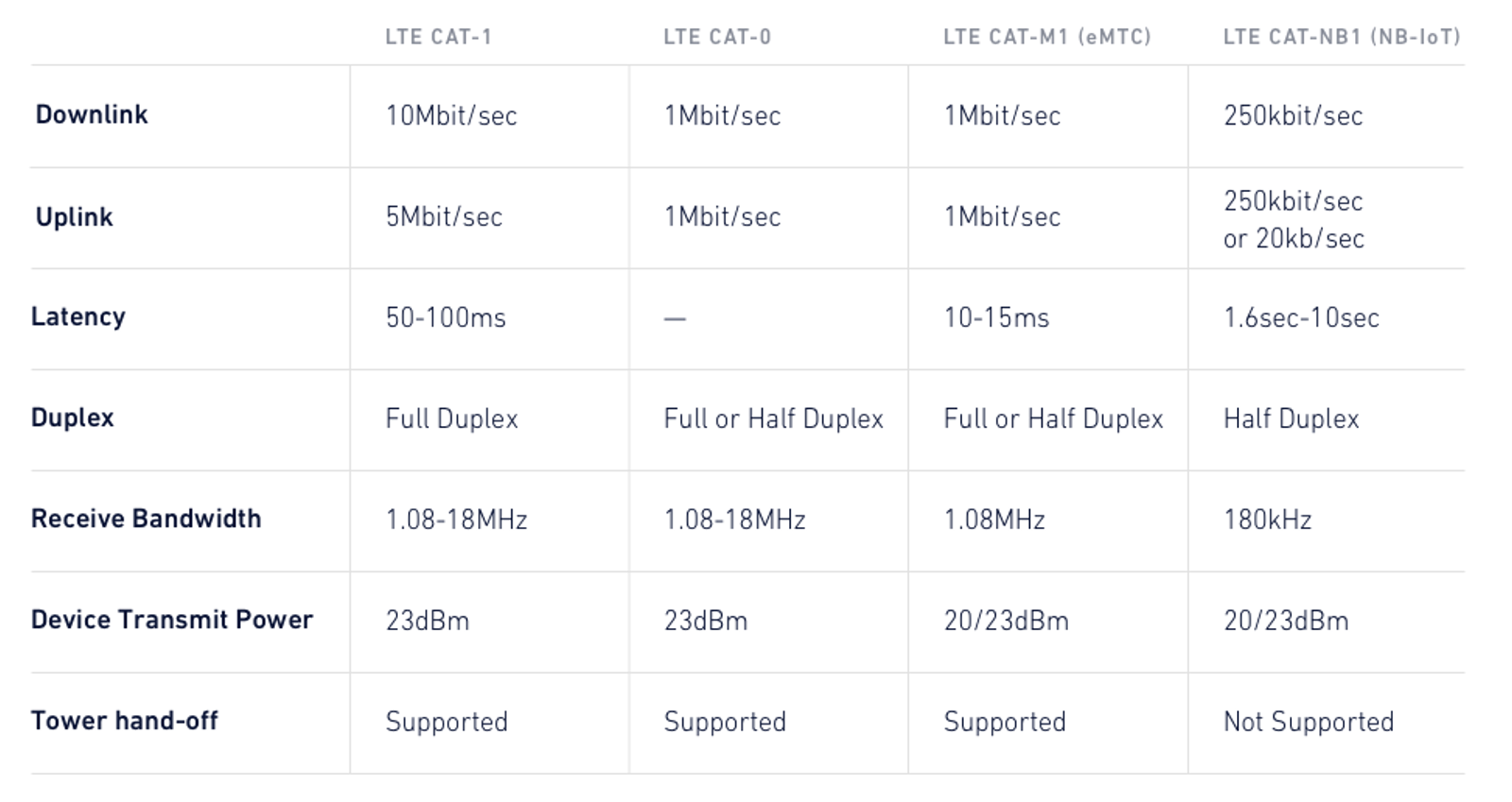IoT connectivity is taking a huge leap – here’s what developers need to know

A deep dive into the information that matters most when navigating these various radio access technologies.
It was inevitable that mobile carriers would one day give Internet of Things (IoT) devices their own networks. It just makes sense that consumer tablets and home video streaming equipment would need different networks than, say, low-bandwidth water pump sensors. This “future” began to unfold in late 2016, when both AT&T and Verizon declared that they were launching North America’s first LTE Cat-M1 networks commercially before the end of the year. Throughout 2017, both telcos doubled down on marketing IoT specific networks that support slower, LTE chipsets. This industry-shift will open new doors for developers seeking cost-efficient, reliable, IoT specific networks.Moreover, North American developers will soon have more options. T-mobile confirmed that it will build a nationwide NB-IoT network in 2018, which it will begin testing in October 2017. “T-Mobile said that its IoT efforts will be bolstered by its purchase of significant 600 MHz spectrum licenses in the FCC’s recently completed incentive auction of TV broadcasters’ unwanted airwaves,” says an article in Fierce Wireless.
T-Mobile’s 600 MHz 5G network promises to deliver increased radio efficiency, higher numbers of connected devices, lower latency and improved battery life, and higher reliability.The market for bandwidth is undergoing one of the biggest transformations in history. More cellular network options mean more opportunities for developers for whom cost, resource efficiency, and access to technology have been barriers. Here are the biggest changes that IoT specific networks will bring:
- Operators can optimize the use of the bandwidth spectrum that they license. Machine-to-machine (M2M) communication isn’t anything new; but, up until this point, M2M tech used the exact same channels, radio access technologies, and resources that consumers would use. With the introduction of Cat-M and other IoT specific networks, cellular carriers are intentionally splitting networks, with portions devoted to higher and lower throughput usage.
- IoT devices will have more cost-effective, reliable coverage. Radio access technology that is specifically optimized for IoT enables more control over bandwidth usage. With new IoT specific networks, developers can take advantage of radio technology, for lower-power devices, to get better coverage inside a building, basement, or location where connectivity is a challenge.
- IoT specific networks translate into more tailored product deployment and security environments. Higher bandwidth consumer devices such as phones and tablets have different parameters than low-bandwidth IoT devices that support an infrastructure use case, for example. With the push towards Cat-M and other IoT specific networks, developers can have more choice and customization options over the networks that they choose.
The need for and path towards new standards
What’s important to consider is that mobile carriers have had, for a while, the ability to partition their networks; but, they’re just now beginning to make this push. That creates room in the IoT network for third parties (like Hologram) to create standards in a development environment where no clear parameters or best practices exist. Hologram is building the following to support development, hardware, and security standards for IoT networks.
- Software-defined networks and developer environments. Hologram has been working aggressively to tackle security, bandwidth efficiency, and the prototype → deployment process. Our team’s approach has been to combine software and hardware infrastructure to create a smarter cellular network (which has evolved into the world’s largest software-defined network). You can learn more about Hologram’s software defined network and corresponding hardware ecosystem, here.
- Open source hardware. If a company makes hardware for developers, that hardware should be open source—period. There are too many barriers to connectivity—and too many uncertainties in the realm of security and system reliability—for IoT development to happen in a closed ecosystem. It’s a simple premise – black boxes stifle innovation while open systems encourage exploration. Going forward Hologram will open-source all hardware we develop for the developer community, including dependent firmware, through OSHWA. You can learn about our role within open source ecosystems, around the development, distribution, and adoption of new standards, here.
- The Nova. The Nova is an open-source USB cellular modem built for the developer community; everyone from makers to system architects. Nova and the Hologram Python SDK makes cellular connectivity extremely intuitive for Single Board Computers (SBC) like the Raspberry Pi family, Beagle Boards, CHIP, and . This resource will make prototyping a more straightforward process, for engineers who are just starting out with the intent of pursuing a larger production. You can learn more about the Nova, here (https://hologram.io/introducing-the-hologram-nova/).
Iot demands a specialized, adaptive, and always-improving networks. Mobile carriers and companies like Hologram are reaching closer alignment in their capabilities, removing barriers for developers to build products.
The future of connectivity = nuances
Emerging Low-power Wide-area Network (LPWAN) and narrower-band cellular technologies promise longer ranges, better coverage, better indoor coverage, longer battery life, and higher device-per-tower density for cellular IoT, and are becoming available today. Modern cellular LPWAN radio access technologies include LTE Cat-0, LTE Cat-1, LTE Cat-M (eMTC), and LTE Cat-NB (NB-IoT), and each provide different throughputs, latencies, and capabilities for different applications.What this means to IoT is that there are and will be plenty of resources and capabilities available, supplied globally, with a common specification with regards to connectivity, authentication, reliable throughput, and multi-tenancy, as well as providing optimizations specific to various IoT use cases. Cellular, as a ubiquitous connectivity option, provides a compelling wireless fabric for the Internet of Things, capable of guaranteeing quality of service and resource availability, and even offering mobility when needed.Here’s a deep dive into what matters most when navigating connectivity options.
How do cellular LPWAN technologies compare?
The TL;DR of the various cellular LPWAN radio access technologies:

A quick module power consumption comparison
At Hologram, we operate a hardware-agnostic cellular network for the IoT; but, to showcase the lower power consumption that can be achieved with an cellular LPWAN module compared to a 3G module, let's take a look at the popular u-blox family of modules.From the u-blox SARA-R4 (Cat-M1, Cat-NB1) and SARA-U2 (3G) module datasheets, we can see the following current consumption reported:
Average Current Consumption Comparisons
- SARA-R4 Series (Cat-M1, Cat-NB1): as low as 100 mA while transmitting and never more than 190 mA
- SARA-U2 Series (3G): as high as 680 mA while transmitting
Peak Current Consumption Comparisons
- SARA-R4 Series (Cat-M1, Cat-NB1): Less than 490 mA
- SARA-U2 Series (3G): As high as 1550 mA
The current consumption values for each of these cellular modules are reported for the same input voltage, a nominal input voltage of 3.8 volts. The average current consumption of the u-blox LPWAN module while transmitting is between 15 percent and 28 percent of the average current consumption of the 3G module.Additionally, the lower peak current values translate into smaller batteries and less filtering needed, thus smaller device sizes are possible as well.
The path forward for existing IoT programs
For existing IoT/M2M applications that currently utilize 2G or 3G radio access technologies, but that have hesitated to adopt 4G/LTE connectivity due to high costs and/or not needing the higher throughputs that 4G/LTE can achieve, cellular LPWAN technologies are a much-needed solution. Cellular LPWAN, among other things, is intended to provide a much-needed upgrade path from pre-4G radio access technologies.With lower-cost radio modules as compared to non-LPWAN LTE, existing applications should now see a painless path forward, while also benefitting from IoT-specific technology enhancements like better indoor coverage and lower power consumption. It is also important to note that, in the US, applications that require a support life of greater than five years for their deployments should be considering post-3G radio access technologies, and LTE Cat-M1 is an available option in the US today.